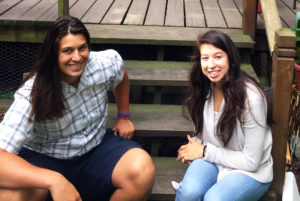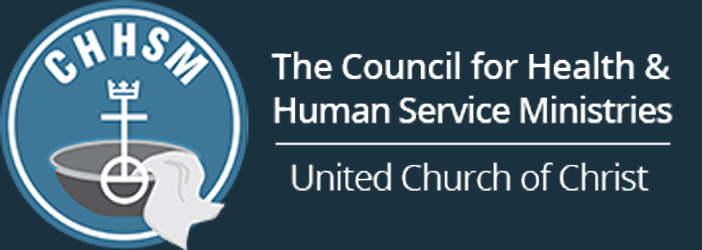Students Find New Career Paths through Technology Project with UCC’s EHM Senior Solutions — and Make Unexpected Friends Along the Way
Denise Rabidoux had a dream. “I wanted to integrate senior high school students with individuals with dementia,” says Rabidoux, president and chief executive officer of the United Church of Christ’s EHM Senior Solutions, headquartered in Saline, Mich. “I wanted to show students that there was this ability for people with memory loss to still connect and participate in something unique and different and innovative in a very personalized way.”
So EHM partnered with It’s Never 2 Late (iN2L) — a technology and software company that focuses on improving quality of life for people with dementia, Alzheimer’s diseases, and other memory impairment issues — to develop a program where students would be paired with residents with dementia, interview the residents, and produce videos.
The students would record the life stories of the residents and landmarks in the community. They would create a memory package of video and images for the residents — and especially for their families — “via tablet technology, software called iN2L FOCUS,” says Jack York, president and co-founder of iN2L.
Rabidoux found eager volunteers through the local Saline High School STEAM (science, technology, engineering, arts, and math) program. “We’ve been involved with the Saline schools for a while, but not with the STEAM students,” she says. “This was the first time we said, ‘What if we tried to engage with these technology students?’”

Students Davis and Sabrina were two of the first four students to work on the project.
The four students who were selected for the pilot program were paired with EHM residents with similar interests. For example, student Sabrina Helmer was paired up with Arlene Schmid because both shared a love of music and both had been Girl Scouts.
“Initially, I thought that this project would be quick and easy: ask the residents some questions, maybe talk to them for a few minutes, and then be gone,” Helmer says. “I didn’t realize the reality of dementia, so working with the residents every day was really different.”
Helmer and the other students found that as they got to know the residents, bonds formed. Friendships blossomed.
“The project was supposed to be 60 days,” Rabidoux says. The students “devoted the entire summer and well into the fall, because once they got to know their partners, they didn’t want to leave the project,” which concluded in October 2017.
Applying Arts and Technology to Help Seniors
The end goal of the project was for the residents and their families to each receive a handheld tablet with the iN2L FOCUS software installed, and loaded with the students’ video projects.
“Technology can completely change the landscape for someone dealing with dementia,” says York, a way to help them live in the moment and connect via images and video that conjures up their memories.

Cameron (left) interview Phil and Pam Hoffer as Zack serves as videographer.
The first task for the students was gathering their partners’ life stories. For this, the four students learned videography, including virtual reality camera training, as well as digital footage backup and organization. EHM purchased — and donated to the school — the video equipment.
Breaking the ice was the first obstacle, as the residents did not always respond to the students’ questions due to their memory impairment issues. But the students stepped up and learned to go with the flow of their partners’ responses.
The students also used their videography skills in the community, recording the homes, churches, schools, and other community landmarks important to their partners.
“Going to Arlene’s house was really cool,” says Helmer. “I’ve actually passed by her house multiple times. Knowing the background and her story … it made me emotional because it captured meaning. It wasn’t just a house. It wasn’t just a garden. It was a story and a timeline of everything in her life.”
In the project’s final stage, the students brought the tablets to the residents and showed them the videos and images comprising their life stories. “It was really cool to capture something that hopefully [Arlene] can look back on” and remember things that happened, and her stories, Helmer adds.
Not only were the residents thrilled to watch the final videos, their families were, too. In one case, a student was paired with a gentleman who died after the taping was completed, Rabidoux says. The family received the notebook so that they could have their loved one’s memories and stories to share with future generations.
“This was an amazing experience,” says Rabidoux. “I’m just so proud of the students!”
Futures Changed for the Better
Although the technology helped create a successful project, “the technology is not the story,” says York. “The technology is simply … a tool” that allowed the relationships to form.
“The program teaches the youth that senior caring work is a viable option for a career — a way to combine your vocation and your passion,” Rabidoux says.
Helmer, for example, was unsure of her final career path. The project — and her friendship with Arlene — made her rethink her future. Although she may still wind up creating and using technology, “she wants to be involved in a caring field now,” says Rabidoux.
The students learned first-hand the importance of memories in one’s life. Even through the dementia, Arlene still feels the presence of her strong family, Helmer says.
“There is joy even with a person with limited or no cognitive ability,” says Rabidoux. “They can sing. They can be humorous. The process helped the residents to be in the moment while talking with the students, sharing their life stories.”
What’s next? Later this year, the original four students will accompany EHM Senior Solutions staff to a conference for senior providers on the importance of reaching out into the community — not only for clients, but for partners. Additionally, four new students will be chosen to tell the life stories of four new residents.
“The program is an example of how faith-based nonprofits can connect with youth,” says Rabidoux. At EHM, “we focus on community. That’s the story of faith-based nonprofits.”
EHM Senior Solutions is a CHHSM-member ministry serving 5,500 older adults. EHM is known for its innovative and technology-advanced programs serving individuals with memory loss or memory impairment.
Join Our Mailing LIst
Follow on Facebook
Iredell Adult Day Services Hosts Ribbon-Cutting to Celebrate Adult Day Health Certification - CHHSM
www.chhsm.org
Iredell Adult Day Services (IADS) in Newton, N.C. — a nonprofit organization dedicated to caring for older adults, vulnerable groups, and their families, and part of EveryAge — hosted a ribbon cut...